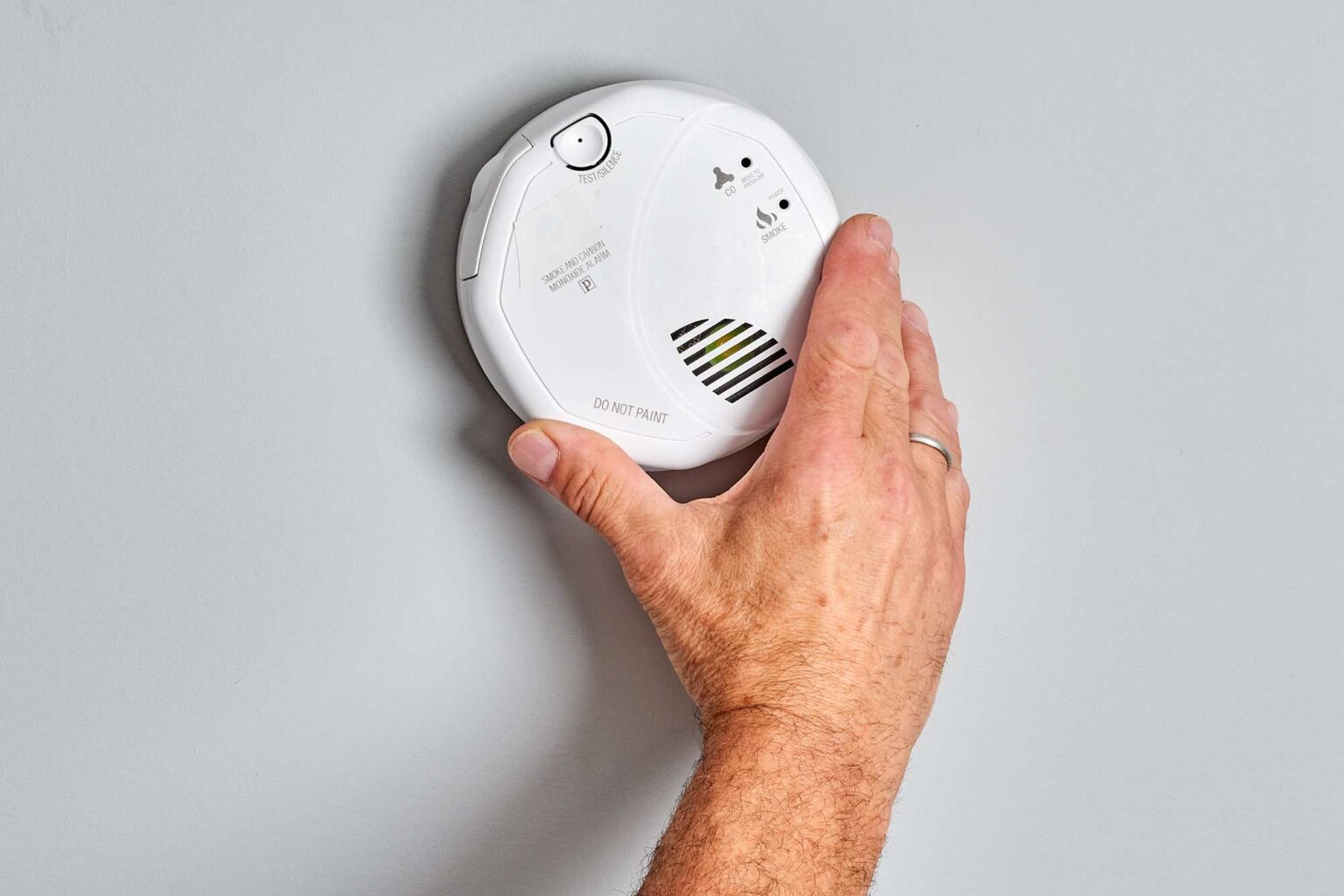Smoke detectors are required by the residential electrical code nearly everywhere, and for good reason: Research demonstrates that smoke detectors save lives and property by alerting occupants to early, smoldering fires. House fires often begin so quietly that occupants have no idea that the home is on fire until it is too late. Smoke may kill occupants long before flames are visible. Smoke detectors remain awake all day and all night, continually sensing even the faintest evidence of smoke and fire.
Smoke detectors work correctly only when they have a continuous electrical charge, which can be provided in one of two ways. Smoke detectors come in two styles: battery-only smoke detectors that are powered by replaceable batteries, and hardwired smoke detectors that are powered by household circuits, with internal backup batteries that step in should the power source fail.
Consult your local permitting agency for codes and regulations regarding hardwired smoke detectors. In some communities, hardwired smoke detectors are increasingly required in new construction and home remodeling work. Even if the building code does not require you to install hardwired smoke detectors in your home, you may wish to consider doing so.
What Is a Hardwired Smoke Detector?
The term “hardwired” refers to any electrical fixture or appliance in which a circuit cable runs directly into an electrical connection box on the device rather than with a cord that plugs into an electrical outlet. From the outside, hardwired smoke detectors look much like battery-powered smoke detectors and are located in the same areas within the home. The difference is that hardwired smoke detectors include an electrical cable that runs unseen behind the ceiling or wall directly into the back of the smoke detector. The electrical cable provides power to the smoke detector all the time, except in the event of a power failure. Should the power fail, an onboard battery takes over and continues to power the smoke detector.
Before You Begin
You can install a hardwired smoke detector yourself, but only if you have a good familiarity with home electrical work and an understanding of electrical circuits before attempting this project. If you don’t have this experience and understanding, it’s best left to a professional electrician to install and replace hardwired smoke detectors.
The electrical code does not require that hardwired smoke detectors need to be connected to a dedicated circuit, though there is nothing wrong with installing a new circuit for this purpose. More often, though, hardwired smoke detectors are installed by splicing into a general lighting circuit or outlet circuit. Either a 15-amp circuit (wired with 14-gauge wire) or a 20-amp circuit (wired with 12-gauge cable) is acceptable for powering hardwired smoke detectors.
Wiring the smoke detectors is fairly straightforward for an experienced DIYer or a professional electrician. First, old-work electrical boxes are installed at appropriate spots where the smoke detectors will be installed. Then, a 2-wire cable is run from the power source to the first smoke detector. This power source can be a circuit breaker panel, an existing wall outlet, a wall switch, or a light fixture that has pass-through wires. Next, 3-wire cables are installed to link the smoke detectors in sequence. Then, the various wire connections are made and the devices are installed.
All standard precautions should be followed when working with electrical circuits. Power must be shut off and tested for voltage before making any feed wire connections.
Need more help? Talk to an electrician near you
Our partners can help you compare quotes from top-rated professionals near you
Get a Quote
The offers that appear in this table are from partnerships from which The Spruce receives compensation.
Read the full article here

